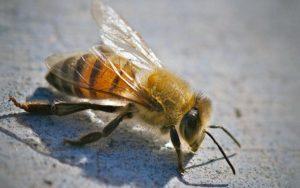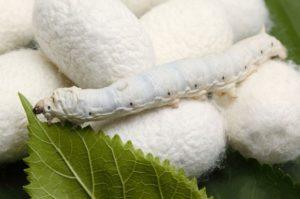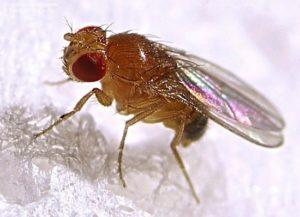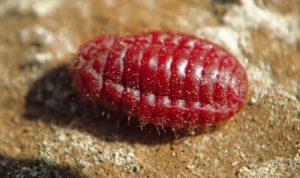What insects are domesticated by humans: 9 examples of useful cohabitation
Man and nature are one. It has always been so. And often people use the gifts of nature for food, while they themselves use wealth. Many natural inhabitants coexist with humanity of the year, and a number have become real helpers. There are a number of insects that are domesticated by man.
Content
Insects and people
It is difficult to say how many species of insects there are. According to various estimates, from 2 to 8 million. Every year there are more and more new species. There is a whole science that studies insects - entomology.
Insects are an important part of modern humans. Among them there are useful, harmful, parasites and endangered species. They are often used:
- in medicine as part of experiments;
- as pets;
- collection items;
- are of interest in technology and engineering;
- part of cultural heritage, parts of myths;
- in religious cultures;
- in cinema and music;
- in literature and art;
- in numismatics and heraldry.
domesticated insects
There are vivid examples of how people domesticate insects and use their fruits. Some have become members of everyday life, while others make such a contribution that it is hard to even imagine.
Bees
Of course, the first in this ranking - bees. They are honey plants that provide benefits and a sweet dessert. But out of a wide variety of representatives of the genus, and there are more than 20 thousand of them, about 20 breeds are more or less friendly to people.
These insects are geniuses in their field. The structure of their family and home is amazing. They have a clear hierarchy, each individual has its own duties and an important role. It is not known exactly when domestication took place, but they have been living side by side for several millennia.
Silkworm
They are two brothers, one is a pest, the other is a very useful insect. Silkworm feeds on mulberry and gives such a valuable and high-quality silk. And in some Asian countries, the larvae are eaten.
The butterfly itself is unpretentious and does not look remarkable. The first mention of the process of domestication of the silkworm in China was found as early as 5000 years ago. Now various new breeds are being actively bred, which makes threads different in strength, length and even color.
Drosophila
The fruit fly is a test subject for the work of geneticists. This small insect is the most studied on the planet. It carried out a lot of experiments, tests of poisons and drugs.
They are used by:
- in genetics;
- experimental evolution;
- body modeling;
- the study of immunity.
Ants
Someone will immediately remember from childhood the familiar experience of dipping a straw into an anthill and then its sour taste. This is the same poison that is used to create medicines. Also, their benefit is that they collect an expensive variety of tea, rooibos.
Interestingly, they are amazing farmers - they grow various mushrooms for themselves. And recently, new varieties have become the subject of their cultivation.
Cochineal
Cochineal mealybug is a source of natural dye. It is called carmine, for a bright shade. They use a substance secreted by worms, so they were deliberately removed for a long time. A safe pigment was used for coloring:
- fabric;
- products;
- carbonated drinks;
- cosmetics
Peacock-eyes
Beautiful large butterflies peacock-eye surprise with the span of their wings and their variegation. And caterpillars are a delicacy - the protein content in them is twice as much as in ordinary meat. By comparison, the price of caterpillars is 400 times higher than the price of beef.
- Saturnian caterpillar.
- Peacock Butterfly.
Spiders
Different representatives of arachnids are beneficial in various industries:
- medicines and pesticides are made from poison;
- they are eaten as a delicacy;
- are the subjects of experiments;
- often raised as pets.
One of the species of spiders brought from Bolivia is bred in special laboratories. They react quite calmly to the presence of people if they do not touch the thin web. Clothing from the web of this type is the most expensive.
Ladybugs
These cute, seemingly harmless bugs are real gluttons and active predators. They are even specially bred and sold. And spotted bugs are valued for the fact that they, as professional means, destroy hordes of aphids, thyroid pests, mold and fungi.
But these spotted beetles aren't really that adorable in nature. They are promiscuous in relationships and often suffer from various diseases.
Zlatki
These beetles with beautiful hard wings often suffer at the hands of people. In search of unusual decorations, they remove representatives of the species. The pattern on their wings is unique and very unusual. Metallic sheen can be:
- bronze;
- gold;
- green;
- yellow;
- red.
Insects that have domesticated themselves
There are a number of insects that are comfortable living next to people. These are the so-called household insects that harm the home and even people. Among them there are various representatives:
- pincers;
- lice;
- fleas;
- Bugs;
- hay eaters;
- skin beetles;
- moths;
- male;
- cockroaches.
Link article help to get to know these unpleasant neighbors closer.
Conclusion
The importance of insects cannot be overestimated. Many of them make an important contribution and play a big role in people's lives. There are those whose fruits of life mankind has been using for years.







